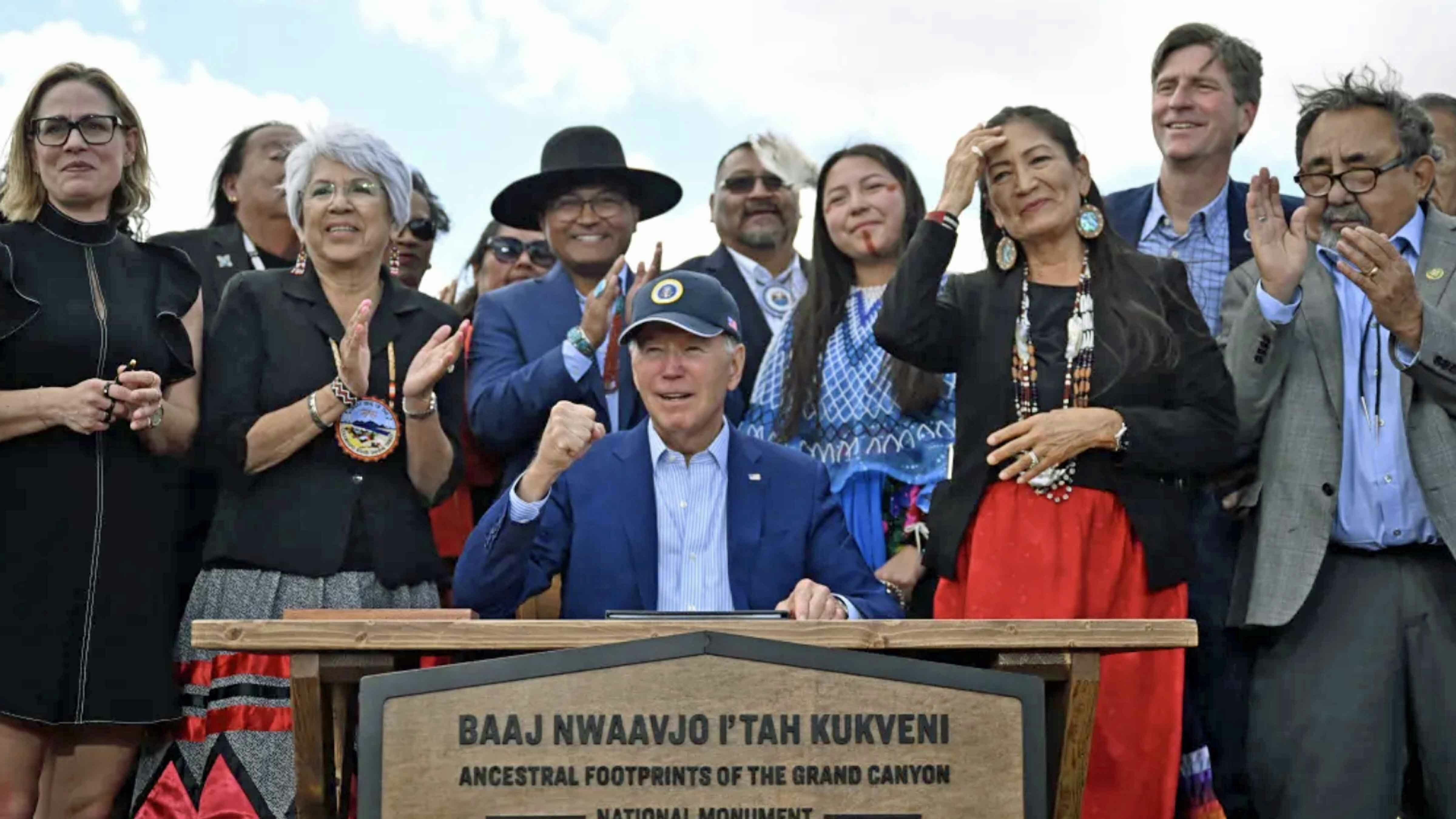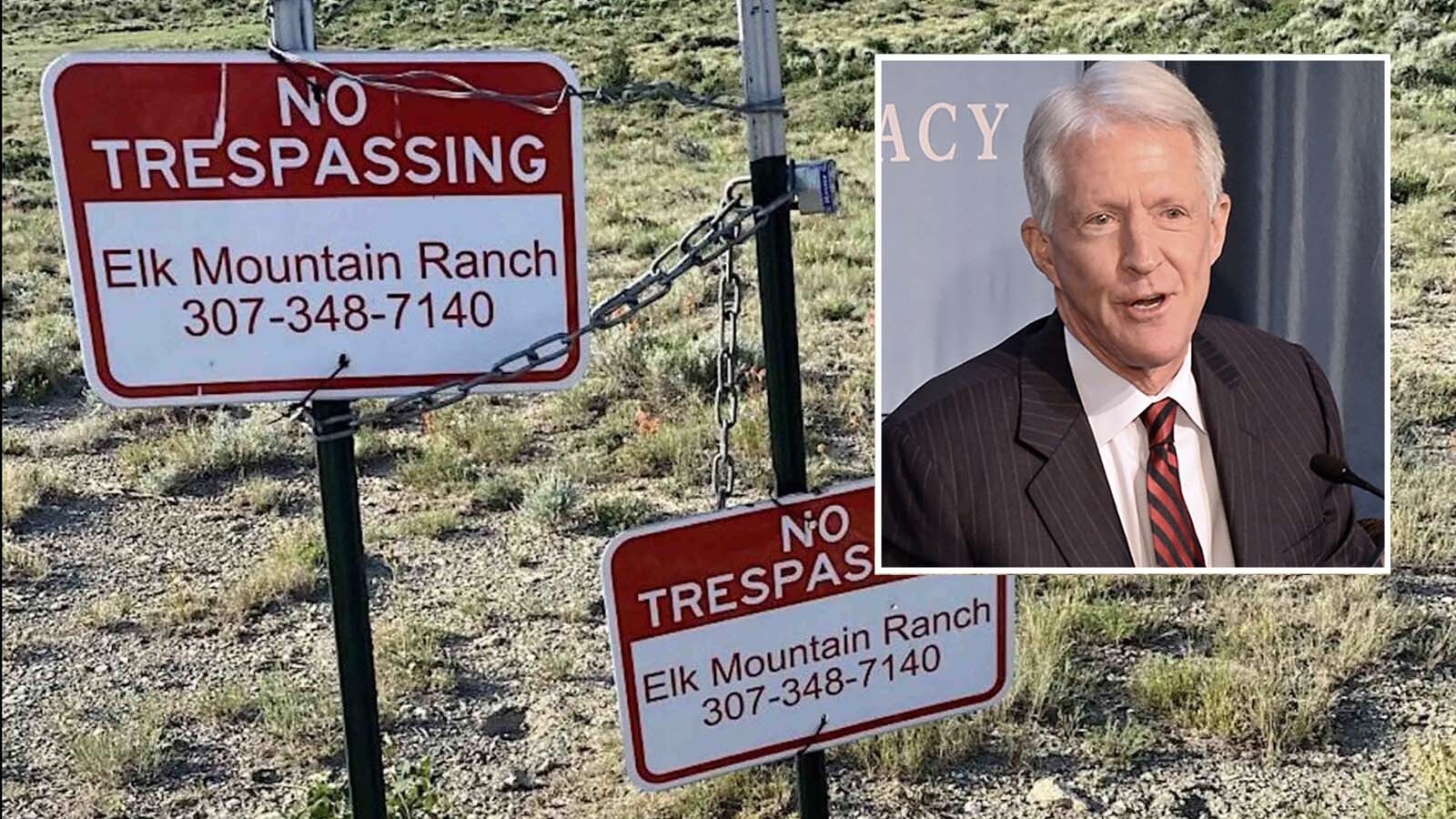In a political move that's become as reliable as gravity or your alarm clock, President Joe Biden this month became the fourth consecutive Democrat president to take a trip West, carve out a chunk of federal land and call it a national monument.
Liberals, numerous conservation groups and media organizations think using the Antiquities Act of 1906 unilaterally as a land management tool in the Western states is the best idea since somebody put a pocket on a shirt.
Many of those same political insiders argue that Wyoming found a legal loophole to become exempt from the powers of the Antiquities Act in 1950 when Grand Teton National Park was made a national monument.
What that means for Wyoming is that presidents can’t just unilaterally carve out chunks of the state to make new national parks without our say-so.
On the other side of the political spectrum, conservatives view it as a power play by Eastern liberals using an outdated law never intended as a broad land management tool to force their will on the Western landscape.
Arizona Gets A New Monument
On Aug. 8, President Biden proudly declared it good "not only for Arizona, but for the planet" when he used the Antiquities Act to create a new national monument surrounding Grand Canyon National Park. It’s a mouthful, the Baaj Nwaavjo I'tah Kukveni Grand Canyon National Monument.
Democrat presidents dating back to Jimmy Carter have used the Antiquities Act to create national monuments in Western states, which allows them to bypass both sides of Congress and provides a way to create national monuments by presidential fiat.
In gaining its exemption from the act, Wyoming politicians were successful in lobbying the bill through the traditional congressional channels and gaining a presidential signature in 1950.
Clinton Declares War On The West
In September 1996, President Bill Clinton created the Grand Staircase-Escalante National Monument in Utah, sparking a firestorm of controversy. Utah politicians accused Clinton of furthering a war on the West.
Democrats returned to southern Utah and picked another political fight in December 2016 when President Barack Obama used the Antiquities Act to set aside the 1.3 million-acre Bears Ears National Monument.
Republicans Strike Back
In early 2017, the Republicans hit back when President Donald Trump shrunk the size of both Bears Ears and Grand Staircase substantially. Trump's move shrunk Bear's Ears to 228,000 acres, about 15% of its original size, and Grand Staircase was reduced by about 1 million acres.
Then in October 2021, President Biden reinstated both Utah monuments to their original designations. It's a game of political football that doesn't seem to have an end in sight.
Wyoming has two national monuments: Fossil Butte near Kemmerer, and Devils Tower in the northeast corner of the state, which was the first national monument created in the United States.
Devils Tower was created in 1906 by President Teddy Roosevelt and Fossil Butte by Democrat President Woodrow Wilson in 1915. It was later expanded by 200,000 acres by Democrat President Franklin D. Roosevelt.
Wyoming's Exemption
Two national monuments was enough for Wyoming politicians at the time. In 1950 when Grand Teton National Park was created, a provision was added to prevent future presidents from using the Antiquities Act in Wyoming.
Jim Magagna, executive vice president of the Wyoming Stockgrowers Association, said use of the Antiquities Act is politically motivated, shuts people out of the process and shuts the door on the opportunity to find collaborative solutions.
He added that many users of public land that he is in contact with in other states are jealous of Wyoming because of the exemption. That’s why when presidents target areas in the West, they hit all around Wyoming, but not in it.
"We are comfortable in Wyoming because we are exempt," he said. "I know livestock producers are very concerned when presidents start moving ahead with these designations because over time it means the elimination of livestock grazing."
Magagna said when Grand Teton National Park was created, the designation allowed existing grazing rights to continue, but not be transferred forward. About 10 years ago the last grazing permits in the park termed out.
Politicizing The Act
Rob Wallace, a Teton County resident and former assistant secretary of the Interior overseeing the National Park Service and U.S. Fish and Wildlife Service, told Cowboy State Daily the Antiquities Act was meant to protect areas facing eminent threat.
"When a large monument is created by fiat using the Antiquities Act, a portion of the public is left out so there's no closure," Wallace said. "Bears Ears is a perfect example. If President Obama had done the hard work of bringing the stakeholders to the negotiating table there might have been a lasting solution."
Wallace cited the Wyoming Wilderness Act of 1984 as an example of collaborative federal land management.
The act designated nearly 900,000 acres of federal land in Wyoming as permanent wilderness.
"It was built over years of hard negotiations with Wyoming's congressional delegation meeting with county commissioners, agriculture representatives and conservation groups," Wallace said. "Everyone had a say in how it came together, and it's a darn good, lasting piece of legislation because they followed a format and built it piece by piece.
“It's an excellent example of how public lands should be protected and a lasting statement on wise land stewardship."
Conservation Groups Tout Use of Antiquities Act
On July 27, a group of 25 conservation groups — including the Theodore Roosevelt Conservation Partnership (TRCP), Backcountry Hunters and Anglers (BHA) and Trout Unlimited — released a report touting the access to fishing and hunting provided by national monuments and encouraging the use of the Antiquities Act to create more national monuments.
However, when contacted by Cowboy State Daily, two of those groups chose not to defend the report. In an email, TRCP spokesman Noah Davis said he was too "swamped" to talk about the report and suggested contacting John Gale with BHA. Gale did not return a telephone call or an email message.
The study fails to mention how the Antiquities Act shuts the public out of the process of creating national monuments. It states that hunters and anglers "are among the communities who have benefitted the most from national monuments."
Further, the report states that 18 presidents, nine Republicans and nine Democrats, have used the Antiquities Act to set aside national monuments.
But the report leaves out what appear to be important details along those lines such as how Democrat presidents have targeted Western states in their designations. Also how the last Republican president to designate a national monument in a Western state was when Dwight D. Eisenhower created Muir Woods National Monument in California in 1959.
Numerous media and conservation groups have criticized Wyoming for missing out on tourism opportunities because of the exemption.
Wyoming Travel and Tourism Director Diane Schober did not return calls from Cowboy State Daily seeking comment on what those might be.





